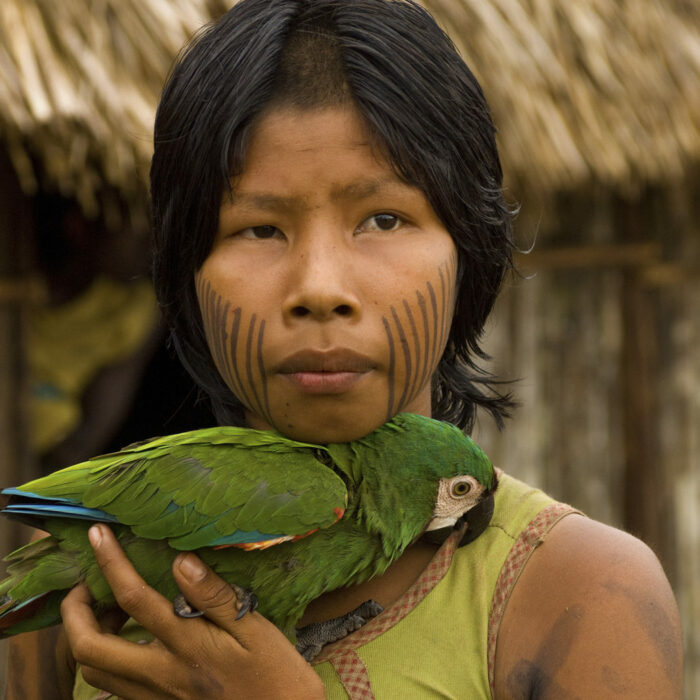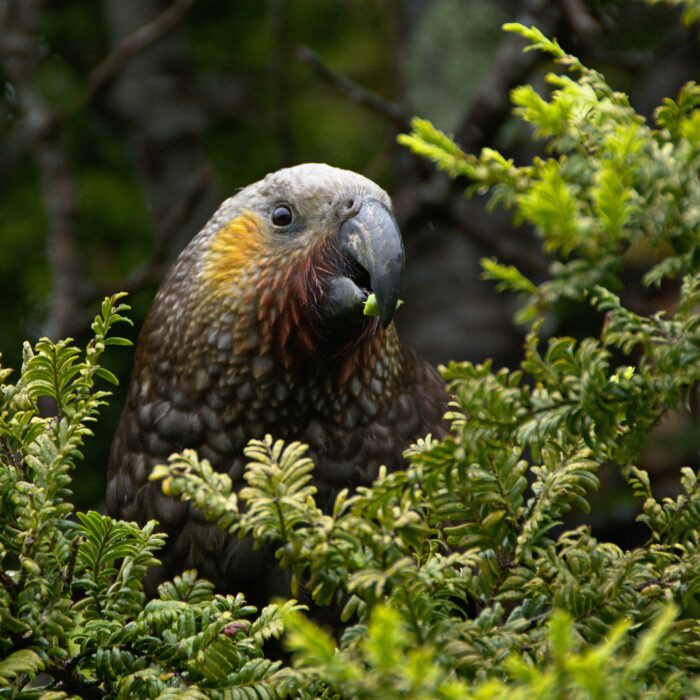
Indigenous Declaration for Mother Earth
Posted in All Articles, News & Publications, Papers & Publications on 03/12/21
Joint declaration of the Indigenous Peoples of the world to the CBD
Read MoreOur goal is simple: protect half the Earth. Getting there is possible only if we work together. Discover how others are confronting the complex issues facing conservation today, and learn how Nature Needs Half is promoting problem-solving to overcome these challenges.

Posted in All Articles, News & Publications, Papers & Publications on 03/12/21
Joint declaration of the Indigenous Peoples of the world to the CBD
Read More
Posted in All Articles, News & Publications, Papers & Publications on 09/19/18
How to conserve half the planet without going hungry By Zia Mehrabi, Erle C. Ellis And Navin Ramankutty Every day there are roughly 386,000 new mouths to feed, and in that same 24 hours, scientists estimate between one and 100 species will go extinct. That's it. Lost forever. To deal with the biodiversity crisis we need to find a way to give nature more space—habitat loss is a key factor driving these extinctions. But...
Read More
Posted in All Articles, News & Publications on 03/12/21
There’s a Global Plan to Conserve Nature. Indigenous People Could Lead the Way. Dozens of countries are backing an effort that would protect 30 percent of Earth’s land and water. Native people, often among the most effective stewards of nature, have been disregarded, or worse, in the past. By Somini Sengupta, Catrin Einhorn and Manuela Andreoni With a million species at risk of extinction, dozens of countries are pushing to protect...
Read More
Posted in All Articles, News & Publications on 09/19/18
Science Alone Won’t Save the Earth. People Have to Do That. By Erle C. Ellis This planet is in crisis. The safe limits within which human societies can be sustained, the earth’s “planetary boundaries,” are being exceeded, a path leading inevitably toward collapse. The experts have spoken. Only if humanity heeds the science, reverses course and lives within earth’s natural limits can disaster be avoided. Or maybe you believe the opposite:...
Read More
Posted in All Articles, News & Publications, Papers & Publications on 09/19/18
A Preliminary Study on Mapping Wilderness in Mainland China Article by Cao Yue, Yang Rui, Long Ying, Steve Carver Wilderness areas are, in the main, places that are ecologically intact, mostly free of industrial infrastructure, and without significant human interference. With a growing appreciation of the intrinsic value of wilderness, more attention is being paid to wilderness protection and management especially as threats increase and remaining wilderness areas shrink in...
Read More
Posted in All Articles, News & Publications on 09/19/18
Space for Nature How much of the planet should we leave for other forms of life? This is a question humanity must now grapple with. The global human population is 7.6 billion and anticipated to increase to around 10 billion by the middle of the century. Consumption is also projected to increase, with demands for food and water more than doubling by 2050. Simply put, there is finite space...
Read More
Posted in All Articles, News & Publications, Papers & Publications on 08/30/18
How to protect half of Earth to ensure it protects sufficient biodiversity Abstract It is theoretically possible to protect large fractions of species in relatively small regions. For plants, 85% of species occur entirely within just over a third of the Earth’s land surface, carefully optimized to maximize the species captured. Well-known vertebrate taxa show similar patterns. Protecting half of Earth might not be necessary, but would it...
Read More
Posted in All Articles, Blog on 07/27/18
August 1st, 2018 Connection is Protection Nature Needs Half Chair, Randy Hayes, explains the NNH core values. What do you find fundamentally valuable? What qualities or issues do you deeply embrace? Such a list would clarify your true values. In this, our first newsletter, a partner organization describes their important work in terms of the core value – connectivity. Sage thinkers tell us that everything really is connected...
Read More
Posted in All Articles on 07/27/18
Help inform others about Nature Needs Half by downloading and sharing this infographic! To download the graphic, right click on the image and select "Save Image."
Read More
Posted in All Articles, Blog on 07/27/18
August 1st, 2018 By Jackie Batrus and Amy Lewis In this era of grim tidings that seem to go from bad to worse on an almost daily basis, it may come as a shock to discover that the single most important truth of our times is that we can still save nature. And one Canadian musician and her community of engaged fans are working to save the Arctic by harnessing...
Read More
Posted in All Articles, Blog on 07/27/18
August 1st, 2018 Article by Gary Tabor, Center For Large Landscape Conservation Across the globe, wildlife have less freedom to roam. In an increasingly fragmented world where nature is segmented, land mammals are moving two to three times less. With limited ability to migrate, to disperse, to mate, to feed and to thrive, wild animals are cornered into situations where the threat of extinction looms greater (Tucker et al....
Read More
Posted in All Articles, News & Publications on 06/28/18
June 28, 2018 - Jeremy Hance Scientists call for a Paris-style agreement to save life on Earth Conservation scientists believe our current mass extinction crisis requires a far more ambitious agreement, in the style of the Paris Climate Accord. And they argue that the bill shouldn’t be handed just to nation states, but corporations too. Let’s be honest, the global community’s response to the rising evidence of mass extinction and...
Read More